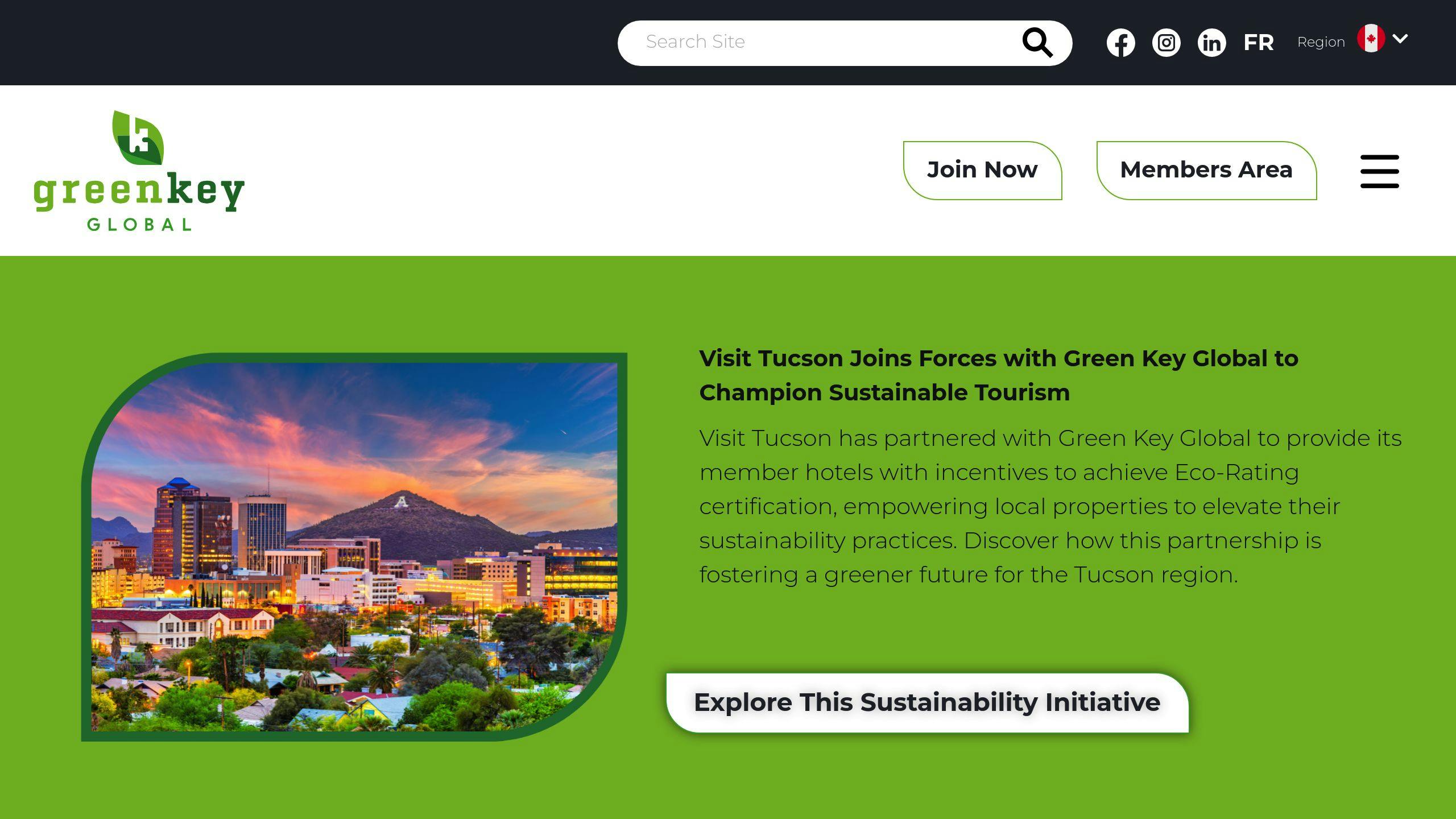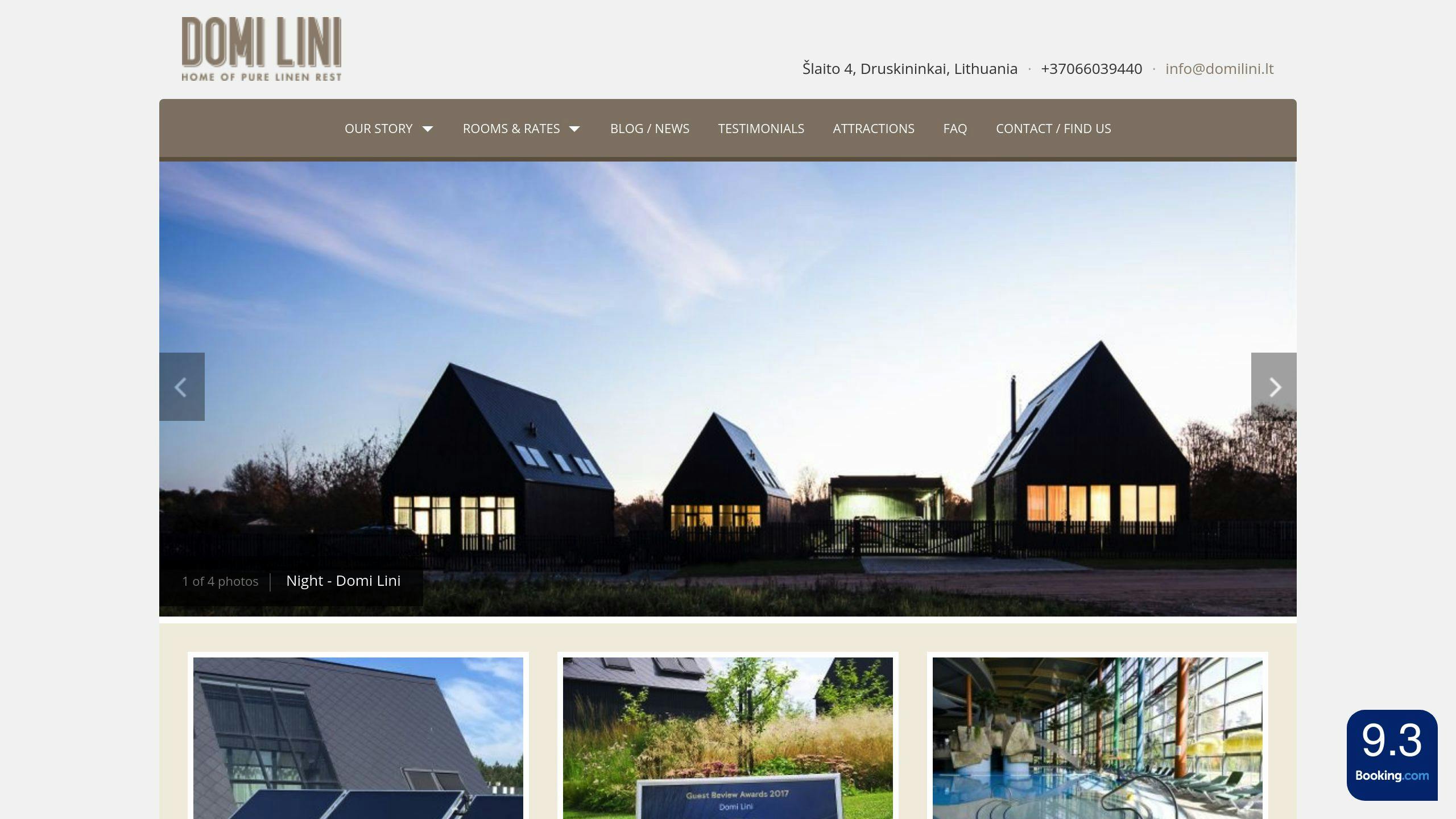
Hotels can save money, meet guest expectations, and help the planet by teaming up with environmental organizations. These partnerships improve operations, support local ecosystems, and engage guests in meaningful ways. Here’s what you need to know:
-
Key Benefits:
- Save costs (e.g., Hersha Hospitality saved $24M with eco-friendly practices).
- Enhance resource efficiency (energy, water, and waste management).
- Build strong community ties through local conservation projects.
-
How to Choose Partners:
- Focus on local environmental needs (e.g., biodiversity, water use).
- Look for groups with proven success, transparency, and local presence.
-
Success Examples:
- Fairmont Hotels’ rooftop bee hotels support biodiversity and guest education.
- Inn By the Sea involves guests in beach cleanups and native plant restoration.
-
Guest Involvement:
- Offer activities like cleanups or workshops to connect guests with green efforts.
-
Measuring Success:
- Track metrics like energy use, waste reduction, and carbon emissions.
- Share results via websites, reports, and in-room materials to build trust.
These strategies not only reduce environmental impact but also boost brand reputation and guest satisfaction. Keep reading for actionable steps and real-world examples.
Standardizing Sustainability: How the AHLA-Green Key Global Partnership is Transforming Hotels

Choosing the Right Green Groups
Partnering with the right environmental organizations requires a thoughtful approach. Hotels need to balance local environmental priorities with their own goals to make a real difference.
Understanding Local Environmental Needs
Before choosing a partner, hotels should take a close look at the environmental challenges specific to their location. This means evaluating aspects like:
- Local biodiversity and wildlife concerns
- Water conservation needs
- Patterns of energy use
- Waste management systems
- Community-driven environmental issues
By understanding these local factors, hotels can identify the most pressing priorities and find partners equipped to address them.
Evaluating Compatibility and Goals
Not every organization will be the right fit. Hotels should look for partners that have a strong history of success, a transparent approach, and a genuine presence in the local community. These factors ensure the partnership can support meaningful, long-term initiatives.
| Evaluation Criteria | What to Look For |
|---|---|
| Track Record | Proven success in environmental projects |
| Transparency | Open communication about progress and outcomes |
| Local Presence | Active involvement in local efforts |
| Resource Capacity | Sufficient funding for ongoing projects |
For example, Radisson Hotel Group collaborates with Green Key, which holds them to rigorous environmental audits, ensuring accountability and high standards [3].
Examples of Effective Partnerships
Several hotels have shown how strategic collaborations can lead to real environmental progress.
The Sustainable Hospitality Alliance, representing over 50,000 properties, works with the Foundation for Environmental Education (FEE) to provide training and education on environmental issues [5].
Fairmont Hotels & Resorts have created bee hotels to support biodiversity while also involving guests in conservation efforts, offering a unique and engaging eco-friendly experience [1].
When choosing partners, hotels should focus on organizations that can:
- Deliver measurable environmental results
- Build strong ties within the local community
- Maintain steady funding for their initiatives
- Involve hotel guests in meaningful ways
- Communicate clearly and effectively
Steps to Build Effective Partnerships
Building partnerships with environmental organizations requires a thoughtful approach that benefits both sides and drives meaningful change. Here’s how hotels can create and sustain these relationships successfully.
Joint Environmental Programs
Collaborating on environmental programs can lead to real results. For instance, Fairmont Hotels & Resorts has worked on biodiversity projects, while Hersha Hospitality’s EarthView program saved $24 million by implementing eco-friendly practices [1][2].
| Program Type | Benefits | Example |
|---|---|---|
| Energy Conservation | Cuts costs, lowers emissions | Hyatt Hotels’ science-based targets |
| Waste Management | Reduces landfill impact | EarthView’s waste reduction efforts |
| Biodiversity Protection | Supports local ecosystems | Fairmont’s bee conservation projects |
Engaging Guests in Sustainability Efforts
Guests play a key role in boosting the impact of environmental partnerships. Hotels should offer ways for visitors to get involved in these efforts. For example, Inn By the Sea invites guests to join conservation activities like coastal cleanups and native plant restoration projects.
Leveraging Local Resources
Using local resources strengthens partnerships by addressing environmental issues with community-driven solutions:
- Sourcing Local Materials: Reduces emissions and supports nearby businesses.
- Tapping into Local Expertise: Uses community knowledge to create effective programs.
- Building Community Relationships: Creates long-term connections with local stakeholders.
The Sustainable Hospitality Alliance, which represents over 50,000 hotels worldwide, showcases the value of local engagement through its partnership with the Foundation for Environmental Education (FEE) [5]. This collaboration highlights how hotels can combine global sustainability goals with locally tailored actions.
sbb-itb-36c9128
Examples of Successful Hotel-Green Group Collaborations
Hotels are finding ways to combine eco-friendly practices with solid business outcomes through partnerships focused on sustainability. These collaborations show how working with environmental groups can make a difference for both the planet and hotel operations.
Fairmont Hotels & Resorts Teams Up with Pollinator Partnership
Fairmont Hotels & Resorts joined forces with Pollinator Partnership to create rooftop bee hotels, restore wild bee habitats, and educate guests about the importance of pollinators. By integrating these efforts into the guest experience, Fairmont not only supports biodiversity but also connects with guests on a meaningful level [1].
Inn By the Sea‘s Local Conservation Projects

Inn By the Sea collaborates with local schools and eco-focused organizations to organize beach cleanups, restore native plants, and offer educational programs for both guests and students. These efforts strengthen ties with the community while helping local ecosystems thrive.
| Initiative Type | Impact |
|---|---|
| Coastal Cleanup | Engages guests and locals in regular beach-cleaning activities |
| Native Plant Restoration | Helps revive ecosystems by planting indigenous species |
| Educational Programs | Provides workshops and activities for schools and hotel guests |
Domi Lini’s Green Approach in Lithuania

Domi Lini, a small property in Lithuania, proves that even boutique hotels can go green. They use renewable energy, geothermal heating, solar-powered water systems, and offer EV charging stations. This shows that sustainable luxury is achievable, no matter the size of the property.
Hersha Hospitality’s EarthView program is another standout example. By implementing eco-friendly initiatives, the program saved $24 million in net costs [2]. This highlights how green practices can deliver real financial advantages alongside environmental benefits.
These examples underline the value of tracking and sharing results from green collaborations, encouraging others to follow suit and push for even more progress.
Evaluating and Sharing Success
Strong partnerships work best when they have clear goals and measurable outcomes, ensuring everyone stays accountable and progress is visible.
Setting, Tracking, and Evaluating Goals
Green initiatives require specific, measurable goals. According to the American Hotel & Lodging Association’s (AHLA) Sustainability Committee, focusing on key metrics is essential for tracking environmental efforts [4].
| Metric | How It’s Measured |
|---|---|
| Energy Consumption | Smart meters, utility bills |
| Water Usage | Flow meters, consumption reports |
| Waste Reduction | Waste audits, disposal records |
| Carbon Footprint | Emissions calculators |
Regular evaluations help maintain momentum and identify areas needing improvement. Assessments should cover environmental impact, cost savings, collaboration effectiveness, and guest engagement. Metrics are typically reviewed monthly or quarterly, with an annual overview to assess long-term progress.
Sharing Results with Stakeholders
Being transparent builds trust and encourages broader participation. Hotels can share their environmental achievements in several ways:
-
Digital Platforms
- Dedicated sustainability sections on websites
- Social media updates
- Email newsletters showcasing progress
-
On-Site Communication
- Displays showing real-time energy and water savings
- In-room materials about sustainability efforts
- Guided tours highlighting eco-friendly features
-
Formal Reporting
- Annual reports detailing environmental impacts and future goals
- Documentation of partnership outcomes
- Regular updates for stakeholders
These methods not only keep stakeholders informed but also strengthen the hotel’s commitment to its environmental goals.
Conclusion: Benefits of Green Partnerships
Sustainable partnerships in the hospitality sector are making a real difference, with hotels reporting noticeable cost savings while advancing eco-friendly goals. These collaborations show that it’s possible to prioritize environmental efforts without sacrificing efficiency.
Hotels that roll out structured environmental programs are taking a leading role in conservation. From launching biodiversity projects to cutting down on waste, these initiatives highlight how the hospitality industry can play a part in protecting the planet.
Technology plays a key role in these efforts. For instance, ClimateTrade’s plug-and-play API offers an easy way for hotels to integrate sustainability efforts into their operations, even letting guests support climate action projects [2].
"The hotel industry has shown a longstanding commitment to sustainability, and many of our member companies have been on the leading edge of these efforts." – Chip Rogers, President and CEO of AHLA [4]
AHLA’s "Responsible Stay" program focuses on several critical areas for environmental improvement, such as:
| Impact Area | Benefits |
|---|---|
| Water Conservation | Lower utility bills and protection of resources |
| Waste Reduction | Reduced disposal costs and minimized landfill use |
| Responsible Sourcing | More sustainable supply chains |
| Energy Efficiency | Lower energy costs and reduced emissions |
Beyond environmental gains, these programs also bring other advantages. Hotels that embrace sustainability often see happier guests, stronger ties with local communities, and a boost to their brand image. This underscores the value of choosing the right partners and sticking to well-planned initiatives, as discussed earlier.
FAQs
What is the green hotel strategy?
The green hotel strategy is all about minimizing a hotel’s impact on the planet while improving operations. It includes practices like smart energy use, conserving resources, and working with the local community. Think LED lights, water-saving fixtures, and partnering on local conservation projects.
| Strategy Component | Examples | Benefits |
|---|---|---|
| Energy Management | LED lighting, solar panels, smart thermostats | Cuts energy bills, reduces carbon output |
| Resource Conservation | Water-saving fixtures, waste reduction programs | Lowers costs, reduces environmental impact |
| Community Engagement | Local partnerships, conservation programs | Builds reputation, strengthens community ties |
How can hotels choose effective green partners?
Hotels should look for partners that align with their values and address local environmental priorities. According to the Sustainable Hospitality Alliance, it’s smart to work with groups that have a proven history in community-focused conservation efforts [5].
What role do guests play in environmental partnerships?
Guests can play a big part in green initiatives. By involving them in activities like beach cleanups or biodiversity projects, hotels not only expand their efforts but also create a stronger connection between guests, the hotel, and the local community.
How can success be measured?
Tracking metrics like energy use, water savings, waste reduction, and carbon emissions is key. Tools like smart meters or audits help gather precise data for ongoing evaluations.
What are common implementation challenges?
Hotels may struggle with upfront costs and measuring their efforts. To overcome this, they can conduct cost-benefit analyses and use data-driven methods to track progress. Groups like the Foundation for Environmental Education provide frameworks to help address these issues effectively [5].

Leave a Reply